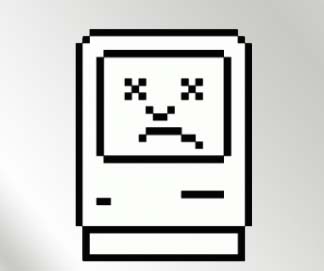Keep in mind that a combination of symptoms is much more likely proof that you’re infected: rarely does a virus have just one effect. That said, here’s a checklist of what to look out for before you press the almighty Scan button on your anti-virus (if the virus hasn’t already disabled it!).
-
- 0Your computer takes charge and does things on its own—moving the mouse cursor all by itself, randomly closing and opening windows, showing you messages that say “We’ve got you!” and so forth. If any of this is happening, we don’t even need to tell you that you’re infected!
- 1Your computer often stops responding. This is more so a sign of an infection with Windows 7 than with earlier versions: Windows 98 used to stop responding often even without infection, so that doesn’t mean much!
- 2The crashes-and-restarts-on-its own syndrome: this is a pretty good indicator of viral activity on your computer. Of course, it could be something else, but if this is happening and your antivirus is working, why not do a scan anyway?
- 3Several apps seem broken. The key word here is “several”: one program not working correctly, like we said, is seldom an indicator of a virus. But if you notice functional anomalies in several applications, it’s time to scan.
- 4Certain drives on your computer have suddenly become inaccessible, even though they show up in My Computer.
-
- 5Not being able to print correctly has been stated as an indicator of a viral infection, but don’t panic if you get a bad printout. It’s probably due to something else. But if it happens in conjunction with other symptoms…
- 6Unexpected error messages with weird codes! Of course, error messages are seldom user-friendly, so the key here is how often they pop up, and how weird they are. For example, a big red cross and an OK button that doesn’t say “OK”.
- 7Now this is so typical of possible viral infection that we hardly need to mention it: distorted dialog boxes and menus. Hit “Scan” immediately. And if it turns out not to have been a virus, there’s still something wrong with your computer, so have it checked.
- 8If, despite all our warnings in the past five years, you still opened a suspicious-looking attachment—driven, of course, by what is called the libido—and immediately after that, everything (or at least some things) went funny, you’re in for it. Hit Scan. And hope that the anti-virus will scan.
- 9It could be that your anti-virus needs a re-install, but it’s unlikely: if the anti-virus is disabled and you didn’t disable it, you’re very likely infected. Before panicking, first try reinstalling the antivirus. If that doesn’t work, panic.
- 10Continuing along those dire lines, if you’re able to install any program but an anti-virus, then yes, you are a victim.
-
- 11When someone tells you he or she got an infected message from you, you almost certainly have something bad on your computer. It might or might not be a virus.
-
- 12A not-so-common symptom, but a deadly giveaway, is the mouse pointer changing to something else. Of course, if you went to one of those “1000 cursors free!” sites and downloaded and installed cursors, then you’re infected by spyware anyway.
- 13Icons on the desktop that you didn’t place are again a giveaway symptom.
-
- 14Unnecessary shortcuts have been created of files and folders that don’t even needed.
- 15You cannot see anything in a folder or drive but it is still occupying memory space. Best solution to try is Go to Organize > Folder and Search Option > View and Unmark – Hide Protected System files, also – Select Show hidden files and folders. Most of the time you will get your hidden files through this.
- 16If you just installed a program—successfully—and it doesn’t work properly, or if its icons have vanished, don’t reinstall it! There’s no time to waste—quickly do a scan.
- 17Now this could also be an indicator of spyware, but when you notice that your modem is doing a lot of activity on its own—both sending and receiving—or if your hard disk is performing more activity than you’d expect, like chattering away when you’re not even working on anything, it could be a sign of viral infection.
Then there’s the System Configuration Utility, activated by typing in “msconfig” at a command prompt. Run it and take a good, hard look at all the programs running. If you see something with random character strings as its name… you’ve guessed it: you’re infected by either a virus or spyware. But most viruses and spyware don’t give themselves away so easily, and call themselves by decent names.
One thing to remember is that slow behavior could also be due to spyware, and it doesn’t necessarily mean a virus. Of course, it could be nothing at all, and all in your head.
You need to decide on what “slow” and “odd” mean. First off, whatever your machine, you know when it’s running slower than usual, and when that happens, there’s a possibility that you’re infected. Windows pop up more slowly. Random activity seems to be happening in the background more often than it should. Something negative seems to have happened to the overall responsiveness of the system.
